Innovative Approaches to Elevate Customer Service Management

Adapting customer services management strategies has become essential as businesses face evolving demands in 2025. The global CRM market, projected to reach $80 billion by 2025, reflects the growing reliance on innovative tools. Companies using CRM applications report a 29% increase in sales and a 34% boost in productivity, showcasing the impact of efficient management.
Innovation plays a pivotal role in redefining customer experience. Consider these statistics:
- Over 50% of customers switch to competitors after one poor experience.
- Customer-centric brands enjoy 60% higher profits compared to others.
- Businesses focusing on customer experience achieve an 80% revenue increase.
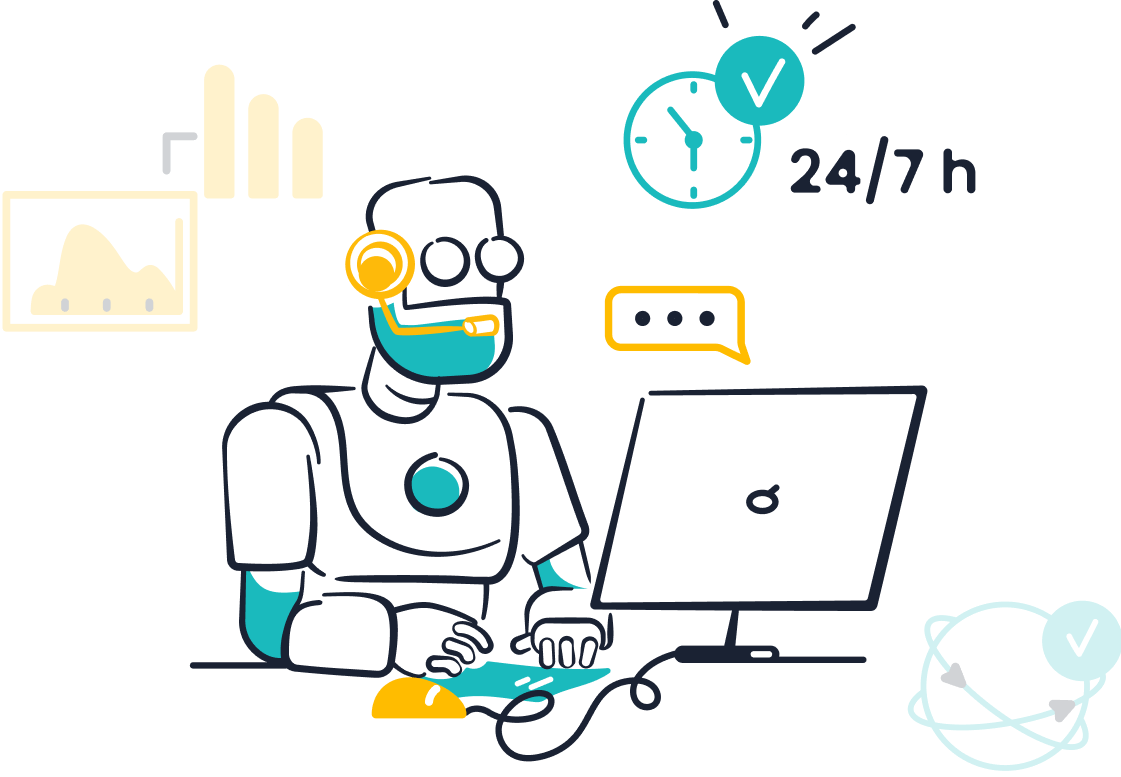
With solutions like Sobot, which offers AI-powered tools, businesses can seamlessly align their customer services management strategies with customer expectations while driving operational success.
The Future of Customer Service Management
Trends Shaping Customer Service in 2025
The landscape of customer service is evolving rapidly, with 2025 set to bring transformative changes. You will notice a significant shift toward AI-driven solutions, enabling hyper-personalized customer experiences. By the 2030s, real-time AI capabilities will make customer interactions more fluid and contextual. Customer Success Managers will play a pivotal role in aligning intelligent systems with business goals, fostering human-AI partnerships.
Recent statistics highlight these trends:
| Statistic | Value | Source |
|---|---|---|
| Customer expectations are higher than ever | 93% | HubSpot |
| Increase in contact volume since 2020 | 71% | FreshWorks |
| Demand for personalized experiences | 68% | Acxiom |
| Shift to cloud technology | 75% | Deloitte |
| Attraction to brands improving the world | 63% | Edelman |
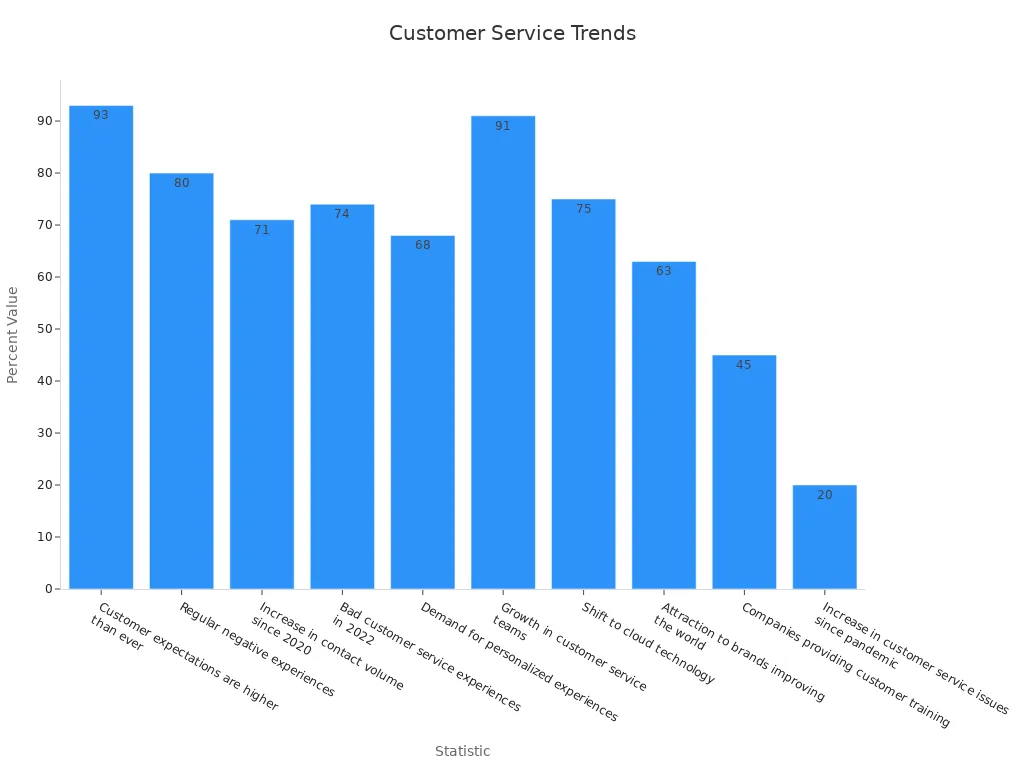
These trends emphasize the growing importance of personalization, omnichannel communication, and advanced technology in shaping effective customer service strategies.
Challenges in Modern Customer Service Management
Modern customer service management faces several hurdles. You may find it challenging to meet rising customer expectations, as 21% of representatives report struggling with increasingly demanding customers. Additionally, 56% of customers often repeat information to different representatives, leading to frustration.
Organizations must balance personalization with scalability. Poor service remains a leading cause of customer attrition, with 74% of U.S. consumers reporting bad experiences in 2022. Furthermore, 52% of consumers feel exhausted after support interactions, highlighting the need for improvement in customer engagement and satisfaction.
The pandemic has also raised expectations, with 93% of teams acknowledging this shift. To overcome these challenges, businesses must adopt innovative strategies that prioritize customer support and satisfaction.
The Need for Innovative Strategies
To thrive in 2025, you must embrace innovative strategies that improve customer service. Customers increasingly demand self-service options, with 81% preferring these solutions. Virtual Customer Assistants can reduce inquiries by up to 70%, while chatbots handle 80% of routine tasks.
| Statistic | Source |
|---|---|
| 81% of customers want more self-service options | CXM Today |
| Chatbots can handle 80% of routine tasks and customer questions | IBM |
| 92% of customers are open to using a knowledge base | Missive |
| Improving self-service is a top priority for 64% of customer service leaders | Gartner |
| Businesses can increase revenues by 4%-8% with better customer service | Bain & Company |
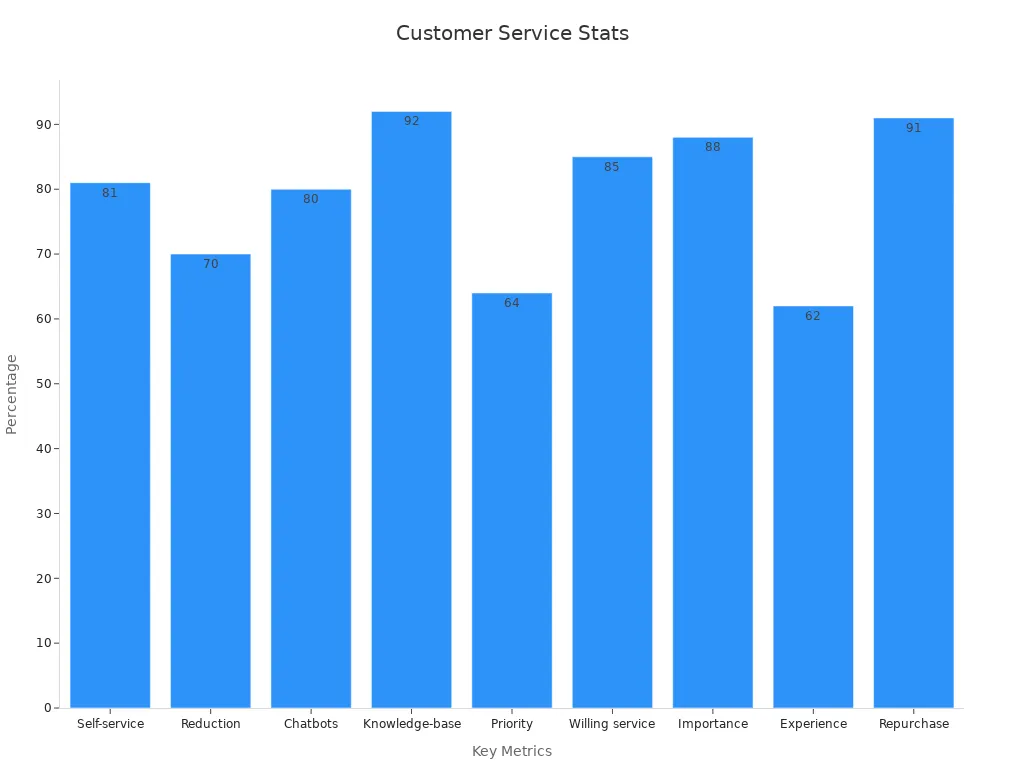
By leveraging AI, automation, and omnichannel communication, you can enhance customer satisfaction and engagement. These strategies not only improve customer service but also drive operational efficiency and long-term success.
Leveraging Technology to Transform Customer Service

AI and Automation for Enhanced Efficiency
AI and automation have become indispensable tools for improving customer service in 2025. These technologies streamline operations, reduce costs, and enhance customer satisfaction by handling repetitive tasks and providing instant support. For example, AI-powered chatbots can manage up to 80% of routine inquiries, allowing human agents to focus on complex issues. This shift not only boosts agent efficiency but also ensures faster resolution times, leading to higher customer satisfaction.
Studies show that AI adoption in customer services management has led to measurable benefits:
| Benefit | Description |
|---|---|
| 24/7 Support | AI agents provide round-the-clock assistance, reducing hold times and increasing satisfaction. |
| Boost Agent Efficiency | AI takes over repetitive tasks, allowing agents to focus on meaningful work. |
| Optimize Operations | AI identifies automatable inquiries, streamlining workflows for support teams. |
| Handle High Support Demand | AI manages customer requests across multiple channels, addressing high volumes effectively. |
Additionally, nearly 66% of telecom providers already use AI, with projections reaching 90% by 2027. This widespread adoption highlights the transformative power of AI in delivering effective customer service. By integrating AI-driven customer support into your strategy, you can improve customer service outcomes and operational efficiency.
Predictive Analytics for Proactive Support
Predictive analytics empowers businesses to anticipate customer needs and deliver proactive engagement. By analyzing historical data and customer behavior, this technology identifies patterns that help you address issues before they arise. For instance, predictive models can alert you to potential product failures or service disruptions, enabling you to offer solutions proactively.
Operational efficiency improves by up to 20-30% with predictive analytics, while customer satisfaction scores increase by 10-15%. These improvements stem from the ability to provide timely, personalized support that enhances the overall customer experience. For example, retail businesses use predictive analytics to recommend products based on browsing history, increasing conversion rates and customer loyalty.
Incorporating predictive analytics into your customer support strategy ensures you stay ahead of customer expectations. This approach not only improves customer service but also strengthens your brand's reputation for reliability and innovation.
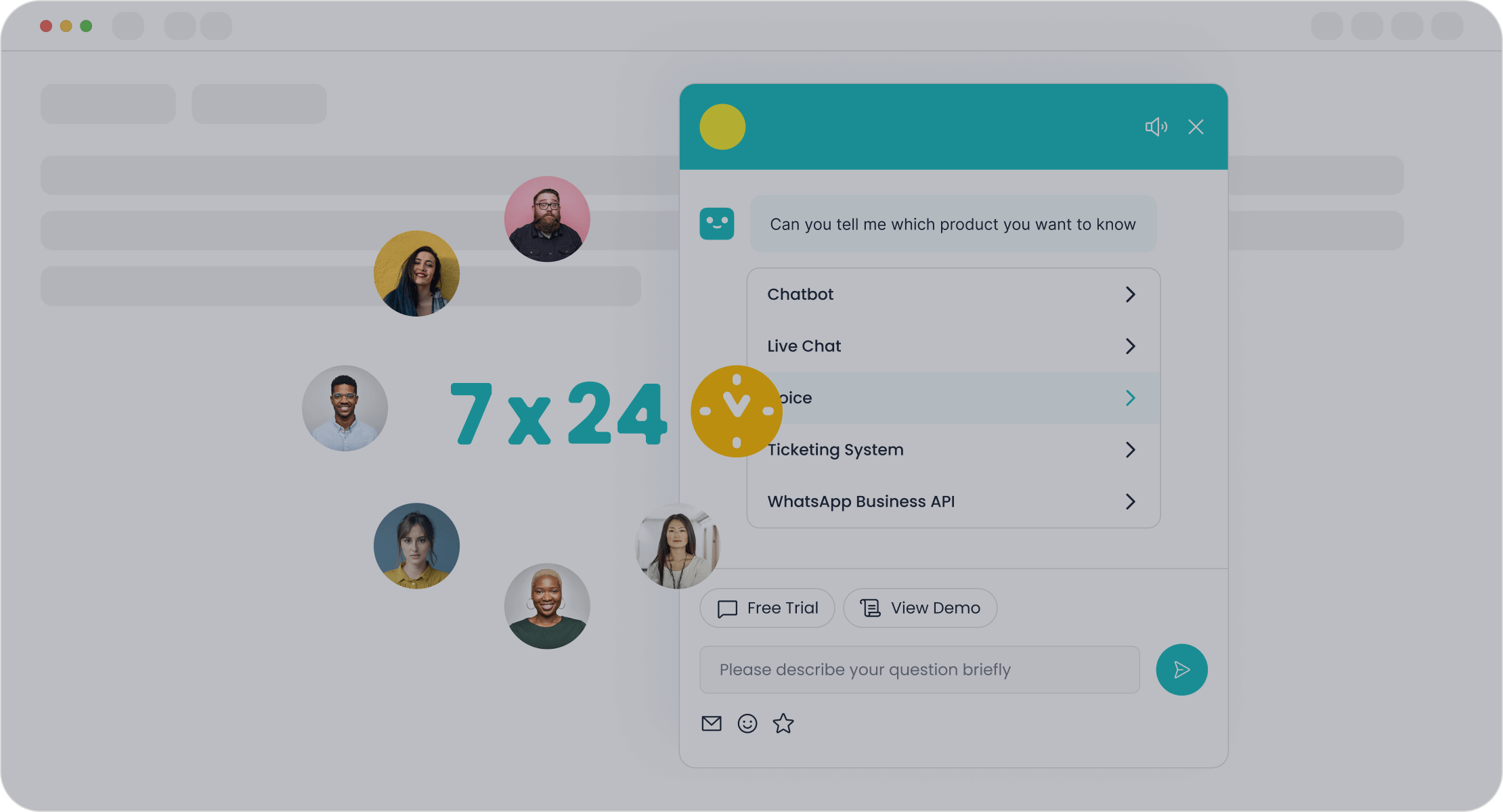
Sobot Chatbot: Revolutionizing Customer Interactions
The Sobot Chatbot exemplifies how AI-driven customer support can transform customer interactions. Designed to automate routine inquiries, it provides instant, 24/7 support across multiple channels. Its multilingual capabilities and no-coding-required setup make it accessible for businesses of all sizes. By leveraging real-time intent assistance and proactive messaging, the chatbot enhances customer engagement and satisfaction.
The impact of Sobot Chatbot implementations speaks for itself:
| Impact | Percentage Improvement |
|---|---|
| Customer Satisfaction Rates | 68% |
| Sales Conversions | 35% |
| Customer Service Costs Reduction | 30% |
For example, OPPO, a global leader in smart devices, achieved an 83% chatbot resolution rate and a 94% positive feedback rate after integrating Sobot's solutions. This success underscores the chatbot's ability to improve customer service while reducing operational costs. By adopting chatbots for customer service, you can enhance client service strategy, streamline workflows, and deliver a seamless omnichannel communication experience.
Personalization and Customer-Centric Strategies

Creating Tailored Customer Experiences
Tailored customer experiences have become a cornerstone of effective customer service. Customers today expect brands to understand their preferences and deliver solutions that resonate with their needs. Research shows that 71% of customers feel frustrated when their interactions lack personalization, while 63% stop buying from brands that fail to offer personalized communication. On the other hand, 72% engage more with brands that send personalized messages, and 90% of marketers agree that personalization drives profitability.
| Statistic | Percentage |
|---|---|
| Customers frustrated with impersonal experiences | 71% |
| Customers engaging with personalized messages | 72% |
| Customers who stop buying from brands with poor personalization | 63% |
| Marketers who say personalization contributes to profitability | 90% |
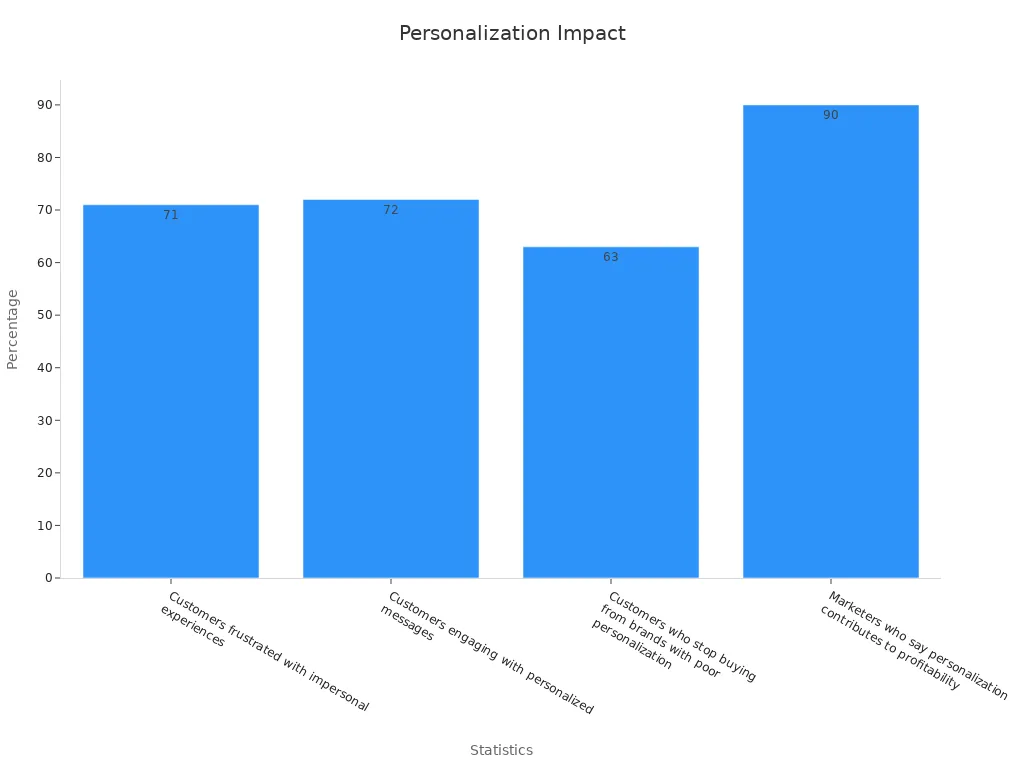
Case studies further highlight the impact of tailored experiences. For instance, a high-end hospitality firm redefined its customer journey mapping to boost guest satisfaction, while a luxury hotel chain enhanced its processes to increase occupancy rates. These examples demonstrate how personalized service can transform customer satisfaction and loyalty.
| Industry | Challenge | Objective | Link |
|---|---|---|---|
| Hospitality | Plateau in guest satisfaction ratings despite high service quality. | Redefine Customer Journey Mapping for a tailored experience. | Link |
| Sports | High volume of customer complaints related to game-day experiences. | Improve customer care infrastructure to enhance satisfaction. | Link |
| Luxury Hotels | 5% dip in occupancy rates due to competition and outdated processes. | Enhance customer experience to increase occupancy and loyalty. | Link |
| Retail | Challenges in optimizing processes for a digital customer base. | Transform Capability Maturity Model to improve customer satisfaction. | Link |
By leveraging tools like Sobot's AI-powered chatbot, you can create personalized interactions that address customer needs in real time. This approach not only enhances engagement but also builds long-term loyalty.
Omnichannel Support for Seamless Interactions
Omnichannel communication has redefined customer support by ensuring seamless interactions across multiple platforms. Businesses that adopt omnichannel strategies see a 91% higher year-over-year customer retention rate compared to those that don’t. Strong omnichannel engagement retains 89% of customers, while weak strategies retain only 33%. Additionally, purchase frequency increases by 250%, and average order values rise by 13% when omnichannel approaches are implemented.
- Businesses using omnichannel strategies see a 91% higher year-over-year customer retention rate.
- Companies with strong omnichannel engagement retain 89% of their customers, compared to 33% for those with weak strategies.
- A 5% increase in customer retention can lead to a profit increase of 25% to 95%.
- Customer retention rates are 90% higher for omnichannel compared to single-channel approaches.
- Purchase frequency is 250% higher for omnichannel versus single-channel.
- Average order value is 13% higher for omnichannel compared to single-channel.
- Omnichannel campaigns that include SMS are 47.7% more likely to convert.
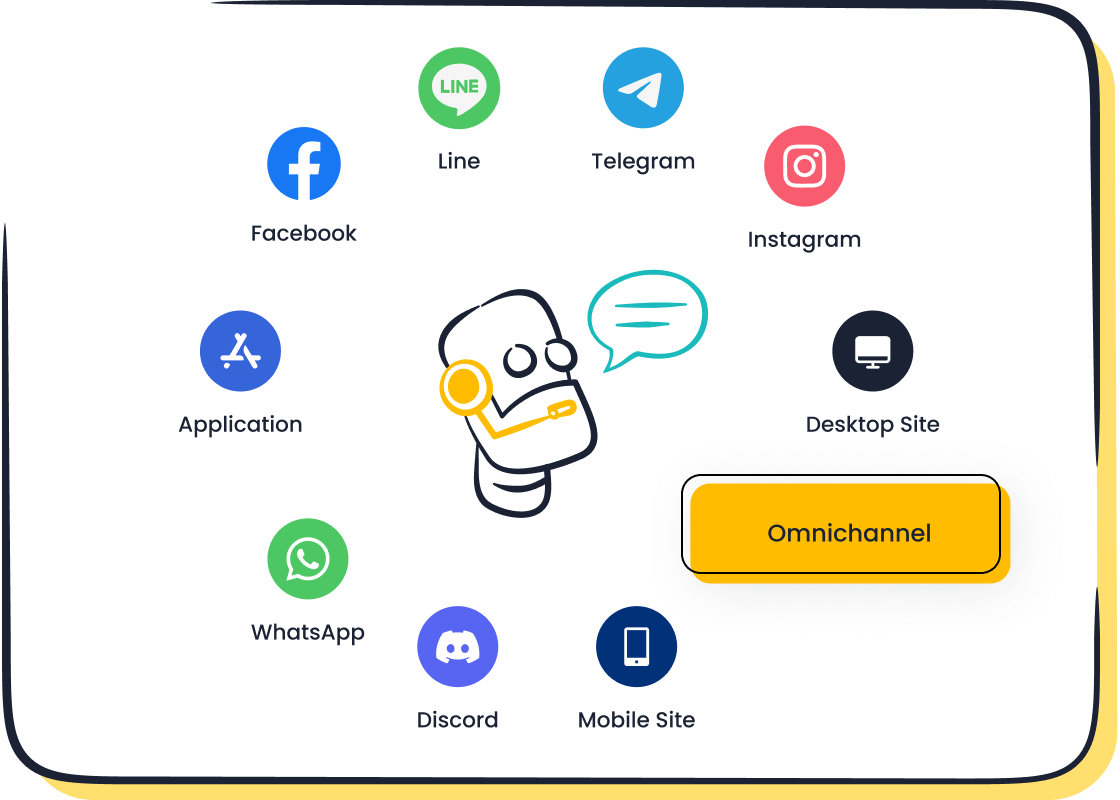
Sobot’s omnichannel solutions unify customer communication management by integrating platforms like WhatsApp, email, and live chat into a single interface. This ensures consistent and effective customer communication, regardless of the channel. By adopting omnichannel communication, you can enhance customer satisfaction and drive operational improvement.
Using Data to Drive Hyperpersonalization
Data has become the backbone of hyperpersonalization, enabling businesses to deliver highly targeted and effective customer service. Market research and customer insights help identify trends and preferences, while predictive analytics forecast future needs. Customer behavior analysis informs personalized strategies, and A/B testing refines these strategies for maximum impact.
| Type of Analysis | Description |
|---|---|
| Market research and customer insights | Utilizes primary and secondary data to identify market trends and customer preferences. |
| Predictive analytics | Leverages historical data to forecast future trends, aiding in strategic planning. |
| Customer behavior analysis | Analyzes interaction data to inform targeted personalization strategies. |
| A/B testing | Employs continuous testing to refine marketing strategies based on performance insights. |

Sobot’s AI solutions excel in leveraging data for hyperpersonalization. For example, its chatbot uses real-time intent analysis to provide tailored responses, while its predictive analytics tools anticipate customer needs. These capabilities ensure effective customer service and foster deeper engagement. By using data strategically, you can transform your customer experience and stay ahead in 2025.
Empowering Teams for Proactive Customer Service
Upskilling Customer Care Teams
Upskilling your customer care teams is essential for delivering proactive customer service in 2025. Training programs not only enhance employee skills but also improve customer satisfaction and retention. Metrics like course completion rates and skills improvement rates highlight the effectiveness of these initiatives. For example:
| Metric | Description |
|---|---|
| Course completion rates | Reflects learner commitment and course design effectiveness. |
| Skills improvement rate | Measures training impact through pre- and post-assessments. |
| Customer satisfaction scores | Indicates how training improves customer interactions. |
| Employee productivity rate | Tracks the impact of training on team performance. |
Sobot offers training resources tailored to customer service strategies, ensuring your team stays ahead of industry trends. By investing in upskilling, you empower employees to handle complex issues, leading to better customer support and proactive engagement.
Providing Tools and Resources for Success
Equipping your team with the right tools and resources is critical for success. Effective resource deployment maximizes productivity and ensures your team meets customer needs efficiently. For instance:
- It minimizes costs while boosting efficiency.
- It supports training and development goals.
- It ensures compliance with regulatory standards.

Sobot’s all-in-one contact center solutions, including AI-powered chatbots and live chat systems, streamline workflows and enhance customer service management. These tools enable your team to resolve issues faster, improving customer retention and satisfaction. Providing the right resources fosters a culture of excellence and ensures your team delivers consistent, high-quality service.
Fostering Collaboration and Innovation
Collaboration drives innovation in customer service teams. Models like knowledge sharing and cross-functional collaboration improve problem-solving and creativity. For example:
| Collaborative Model | Description |
|---|---|
| Knowledge Sharing | Enhances teamwork and fosters camaraderie, leading to innovative solutions. |
| Cross-Functional Collaboration | Bridges communication gaps across departments, ensuring seamless operations. |
| Feedback Mechanisms | Encourages creativity and keeps projects aligned with goals. |
Sobot’s integrated platforms promote collaboration by unifying communication channels and providing real-time insights. This approach not only enhances team engagement but also drives innovative customer service strategies for success.
Ensuring Data Privacy and Security in Customer Service
Building Trust Through Transparent Practices
Transparency is the foundation of trust in customer service. When customers understand how their data is used, they feel more secure engaging with your business. Clear communication about data usage policies ensures customers know what to expect. For example, explaining how you collect, store, and use their information builds confidence. Regular data audits also play a crucial role. They verify that your actions align with your privacy policies, maintaining credibility and trust.
Compliance with privacy laws further strengthens this trust. These regulations provide a structured framework for businesses, ensuring they meet evolving cultural norms around data protection. By adhering to these practices, you demonstrate a commitment to safeguarding customer information, which fosters long-term loyalty.
Compliance with Privacy Regulations
Adhering to privacy regulations like GDPR or CCPA is essential for modern businesses. These laws govern how you collect, store, and use customer data. They also emphasize user rights, such as the ability to access or delete personal information. Staying compliant not only avoids legal penalties but also enhances your reputation.
To ensure compliance, you must implement effective data governance. This involves managing and tracking data usage while securing customer consent. For instance, Sobot’s AI solutions include features that help businesses maintain compliance by encrypting data and providing continuous backups. These tools simplify the process of meeting regulatory requirements, allowing you to focus on delivering exceptional customer service.
Balancing Personalization with Data Protection
Personalization enhances customer experiences, but it must not compromise data security. Striking this balance requires thoughtful strategies. Regulatory diligence is key. You need to navigate privacy laws while ensuring your personalization efforts respect user rights. Effective data governance helps you manage consent and track data usage responsibly.
Anonymizing data is another effective approach. Techniques like masking or tokenization protect personal information while enabling data analysis. For example, Sobot’s AI-powered chatbot uses anonymized data to deliver tailored responses without risking privacy. By adopting these practices, you can offer personalized experiences while safeguarding customer trust.
Measuring Success and Adapting Strategies
Key Performance Indicators for Customer Service Management
Tracking the right KPIs ensures you measure the effectiveness of your customer service efforts. These metrics provide actionable insights into your team's performance and help identify areas for improvement. Consider the following KPIs:
| KPI | Description |
|---|---|
| Customer Satisfaction Score | Measures how well you meet customer expectations. |
| Net Promoter Score (NPS) | Gauges customer loyalty based on their likelihood to recommend your service. |
| First Contact Resolution Rate | Tracks the percentage of issues resolved during the first interaction, reflecting efficiency. |
| Average Resolution Time | Indicates the average time taken to resolve customer issues, showcasing speed and responsiveness. |
| Calls Reopened | Monitors incidents closed prematurely, which can impact satisfaction. |
| Knowledge Articles Published | Measures the availability of self-service resources, reflecting the health of your knowledge base. |
| End User Knowledge Article Access | Tracks how often customers use published articles, indicating their effectiveness. |
Focusing on these KPIs allows you to align your strategies with customer expectations while improving operational efficiency. For instance, reducing average resolution time can significantly enhance customer satisfaction.
Leveraging Feedback for Continuous Improvement
Customer feedback serves as a powerful tool for refining your service strategies. A structured feedback loop ensures you act on insights to improve trust and loyalty. This process involves collecting, analyzing, and implementing changes based on customer input.
| Evidence Description | Key Points |
|---|---|
| Importance of 'Act' phase | Implementing changes based on feedback enhances trust and loyalty. |
| Strategic approach of Customer Feedback Loop | Places customers at the center of improvement efforts. |
| Systematic analysis of feedback | Informed decisions lead to better service quality and engagement. |
For example, Sobot's AI-powered solutions help businesses analyze feedback systematically. By identifying recurring issues, you can make informed decisions that improve customer engagement and satisfaction. Acting on feedback not only strengthens relationships but also positions your brand as customer-focused.
Data-Driven Insights for Strategic Adaptation
Data-driven insights empower you to adapt your customer service strategies proactively. Predictive analytics, for instance, anticipates customer needs, enabling you to address potential issues before they arise.
| Insight Type | Description |
|---|---|
| Predictive Analytics | Anticipates customer needs, allowing proactive service adjustments. |
| Employee Training in Data Skills | Equips teams to tailor experiences based on data analysis. |
| Alignment with Business Goals | Ensures data projects align with customer satisfaction objectives, improving service quality. |
Sobot's AI solutions excel in leveraging data for strategic adaptation. For example, predictive analytics tools can forecast customer behavior, helping you optimize support processes. By aligning data insights with your business goals, you can enhance service quality and maintain a competitive edge.
Innovation drives the future of customer service. By embracing advanced tools and strategies, you can meet the evolving demands of 2025. Forward-thinking approaches, such as leveraging AI and predictive analytics, position your business to stay competitive. Prioritizing customer-centric methods ensures stronger relationships and lasting loyalty. Technology empowers you to deliver seamless, personalized experiences that exceed expectations. Start transforming your customer service today to secure success tomorrow.
FAQ
What is the role of AI in customer service?
AI automates repetitive tasks, provides instant responses, and enhances customer interactions. It helps you improve efficiency, reduce costs, and deliver personalized experiences. Tools like AI chatbots ensure 24/7 support and faster resolutions.
How does omnichannel communication improve customer service?
Omnichannel communication integrates multiple platforms into one system. It ensures seamless interactions across channels like email, live chat, and social media. This approach helps you retain customers and improve satisfaction rates.
Why is personalization important in customer service?
Personalization builds stronger connections with customers. It shows that you understand their preferences and needs. Tailored experiences increase engagement, loyalty, and profitability, making your brand stand out.
How can predictive analytics enhance customer service?
Predictive analytics anticipates customer needs by analyzing past data. It helps you address potential issues proactively, improve satisfaction, and optimize operations. This technology ensures timely and effective support.
What tools can empower customer service teams?
Equipping your team with AI-powered solutions like Sobot’s chatbot and live chat systems boosts efficiency. These tools streamline workflows, reduce workloads, and improve customer satisfaction.
See Also
Essential Strategies for Effective Call Center Quality Management
Transforming Customer Support with AI-Powered Service Agents
Enhancing Operational Efficiency with AI Customer Service Tools
Comprehensive Guide to Quality Management Systems in Call Centers
Ten Essential Steps for Successful Omnichannel Contact Center Implementation